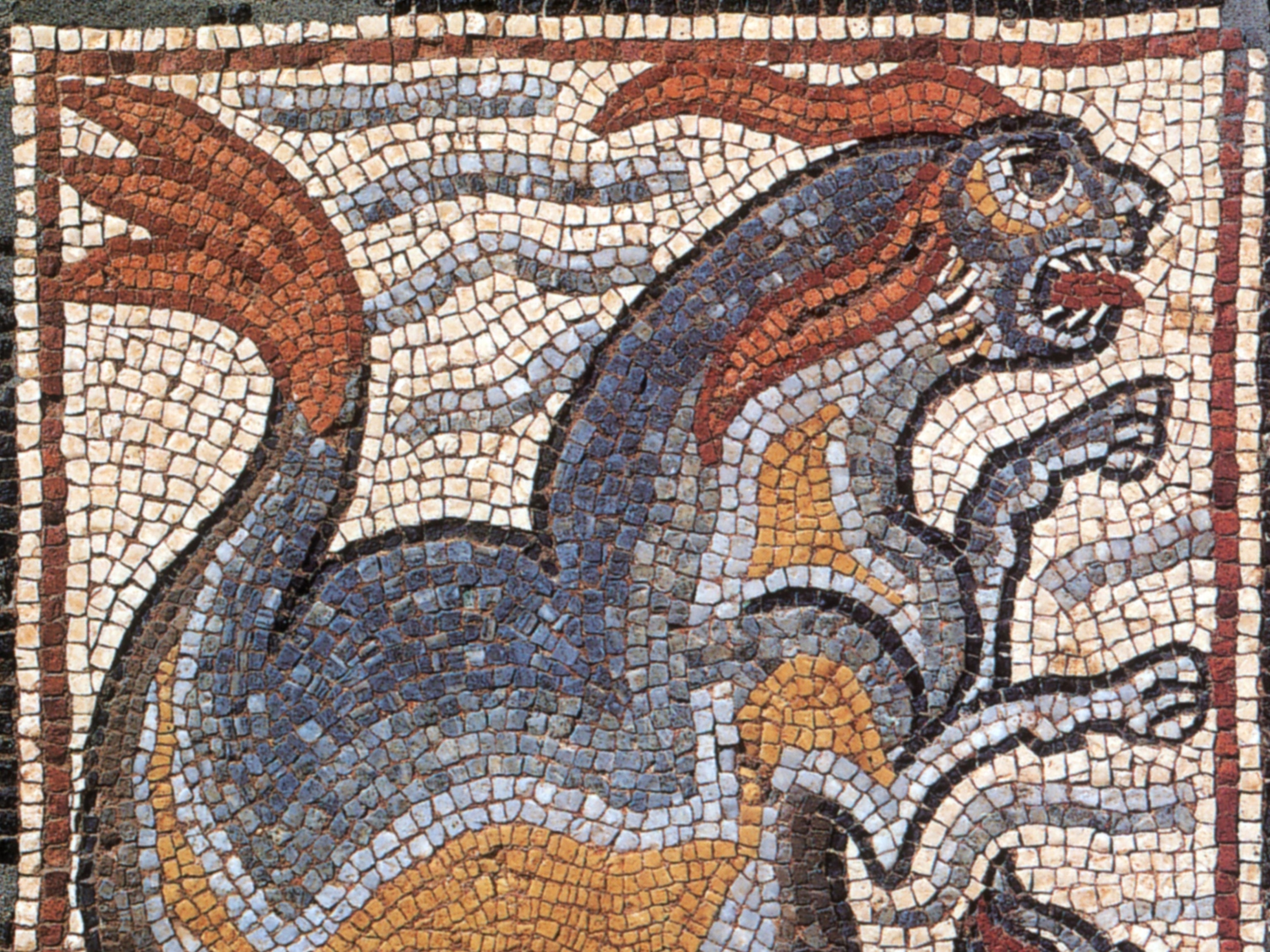
Behind the Headlines: Who Are the Crimean Tatars?
Could the Tatars face the nightmare of repression from Russia again?
For Crimea's Tatars, history is not just something in books—it is a guiding and often painful undercurrent of everyday life. The eldest of them still remember the 1944 deportation of their entire population under Soviet leader Joseph Stalin. They were given 30 minutes' notice, and most would never see their homes again.
Nearly half of the 200,000 exiled men, women, and children loaded onto cattle cars died en route or shortly after their arrival in the Urals, Siberia, and Central Asia. Exile from their homes was punishment for their alleged "massive collaboration" with the Nazis who had occupied the peninsula. They, and their children and grandchildren who have been able to return over the past 20 years, are loath to fall once again under Moscow's control. (See: "Inside Crimea: A Jewel in Two Crowns.")
Some of the children of the deported—raised in Uzbekistan and now adults—have returned to become leaders. Refat Chubarov, head of the Mejlis of the Crimean Tatar People, the representative body of the Tatars, has called on his people—there are now approximately 300,000 Tatars in Crimea—to peacefully boycott the referendum. Nevertheless, some Crimean Tatars have vowed to oppose secession, with force if necessary. According to Western press reports, some Tatars fighting with the rebels in Syria have offered to return to join the cause.

Exile and Return
His mother was 11, his father 13 when they were deported from the village of Ay-Serez to Uzbekistan in 1944. "Our parents said we had to do all we could to return to our homeland," says Chubarov, speaking from the Crimean capital, Simferopol. "We had to study hard, to work hard, and to save money to someday return and buy a home." In 1968 his family was one of only 300 allowed to return "so the Soviets could tell the world they were letting us back," he says bitterly, "for propaganda purposes."
It wasn't until the late 1980s and the disintegration of the Soviet Union that large numbers of Tatars began returning from exile. "But many didn't make it," says Chubarov. "Our grandfathers, and so many others, they were all buried in Uzbekistan."
Now, other children and grandchildren of the deported, the strong ones, are up all night guarding their neighborhoods—afraid of attacks by ethnic Russians or the Russian soldiers who have swarmed their once-quiet peninsula. There are credible, firsthand reports of X marks on the doors of Tatar homes, a worrisome echo of the deportation tactics used more than half a century ago.
A spokesperson for the Crimean Tatars, Leyla Muslimova, says that while every year has shown "some excesses" against the Tatars, from "skinheads" destroying Tatar gravestones to the destruction of Tatar homes under construction, the tension now is unbearable. "Right now we are afraid. We're awaiting some provocation from pro-Russian organizations but are calling on our people to remain quiet and calm," she says, "and for the United Nations to invite some forces to protect us."

Tatar Power
Long ago it was the Tatars who ruled the region. Their history with Russia—a relationship of trade and cooperation, intermarriage and cultural exchange, but at times, significant mistrust—stretches back over the centuries. (See list of famous Russians of Tatar descent at the end of the story.)
The Crimean Tatars "first came on the map" around 1241, says Eric Lohr, when Batu Khan, a grandson of Genghis Khan, conquered the region, making it a strategic part of the Mongol empire and close trading partner with the emerging power center of Moscow. (Related: "Genghis Khan's Secret Weapon Was Rain.")
"The Moscow district still known as Kitai Gorod [which translates as Chinatown] is where the Crimean traders set up shop. Relations were strong," says Lohr, chair of Russian history and culture at American University in Washington, D.C. By the 15th century, the group dominated the region as the Crimean Khanate—the longest lived of the Turkic-speaking khanates that were the remnants of the vast Mongol empire—eventually falling under the loose protection of the Ottoman Empire in the latter part of the century.

The Ottomans wanted slaves, and the Crimean Tatars provided them from the steppes of Ukraine and southern Russia—with the help of raiding Nogai Tatars and, until the 15th century, with the collaboration of Genoese merchants who shipped them off from the Crimean port town of Feodosia. One translation of a Ukrainian folk song reads:
The fires are burning behind the river—
The Tatars are dividing their captives.
Our village is burnt
And our property plundered.
The khanate ruled until 1783 when, after a successful war against the Ottoman Empire, Empress Catherine the Great annexed the peninsula as part of her vast expansion of the Russian Empire. During this time, says Lohr, there were several mass migrations of Crimean Tatars to Turkey (where populations remain); another migration followed the Crimean War, which ended in 1856.
The peninsula was the last holdout of the White Army during the civil war that followed the murder of the last tsar and the Bolshevik Revolution of 1917. But the decades that followed were marked more by repression than by resistance. The Crimean Tatars were not spared the forced collectivization of the Soviet regime and the Holodomor, or man-made famine, of the early 1930s.

Stalin's Repressions
Stalin began deportations of "suspect nationalities" well before World War II, says Paul Gregory, a research fellow at Stanford University's Hoover Institution in California and author of multiple books on the Soviet archives and gulag system. "Special settlements" were small groupings of families in remote areas, he says, "which were especially cruel because the whole family would be deported, and unlike in a gulag, there were no terms of sentence. It was unclear whether you'd ever get out."
But it was an April 13, 1944, NKVD (People's Commissariat for Internal Affairs) order "On Measures to Clean the Territory of the Crimean Autonomous Republic of Anti-Soviet Elements" that set in motion what Gregory calls "the major blow" to the Crimean Tatars: the deportation order of May 11, 1944, that shaped the Crimean Tatars' fate in the decades to follow, and much of their distress over Russia's actions today.
"This [was] not a legal referendum," says Mustafa Dzhemilev, a longtime leader of the Crimean Tatars, speaking from Bakhchysaray, the former capital of the Crimean Khanate and the heart of Tatar culture and architecture. He was six months old when his family was deported.
In Uzbekistan, Dzhemilev became a leading Soviet dissident, protesting not just Russia's invasions of Czechoslovakia and Afghanistan, "but [also] for what was central to us, the return of Crimean Tatars to our homeland." He suffered 15 years in Soviet prison camps, including in a vast camp system in Magadan where he worked building and carrying cement blocks, "often ending up in the izolator [isolation] because I didn't fulfill my 'norms,'" recalls Dzhemilev.
He was freed in 1986, at the height of the Perestroika movement, and joined the tens of thousands of Crimean Tatars who were finally able to return home in the late 1980s and 1990s, following a trickle of returning Tatars in previous decades.

A Homeland Like Paradise
Dilara Setyeyiva was part of that unwelcome trickle. "There were no more than 10,000 of us here by 1979," says Setyeyiva, an engineer, mother of three, and now head of a teachers council for Crimean Tatars that tries to promote learning in the Crimean Tatar language. She and her young family fought bureaucratic red tape in their efforts to resettle, and at one point were kicked out of the area altogether. "We didn't go back to Uzbekistan when that happened," she said. "We didn't want to scare people into thinking there was no chance for them to return to our homeland."
And that homeland offered much to yearn for: It's "like paradise" in parts, says writer and adventurer Tim Cope, who traveled the peninsula by horseback in the spring of 2006 through its "waist-high grass, tulips and camomile" before the steppe meets the coastline of beaches, where dolphins play in the waves. In his book On the Trail of Genghis Khan, Cope details both this beauty and the long-standing tensions between ethnic Russians and the Sunni Muslim Crimean Tatars, including violent clashes over a Russian market built in the 1990s over mausoleums where Tatar khans and spiritual leaders were laid to rest.
Speaking from her home in Bakhchysaray—the site of the market clashes years ago—Setyeyiva laughs at the idea that Russia will build a bridge across the Strait of Kerch connecting Crimea to the Russian mainland. Like many Tatars, she embraces Ukraine's turn to the West and fears that a Crimea under Russian control will become like the disputed territory of Abkhazia, a once-beautiful place, she says, "that will become like a desert. These small republics, we will become isolated from the world."
Five Famous Russians of Tatar Descent
Tatars are an ethnic Muslim minority in Russia; many notable achievers throughout Russian history have had Tatar roots.
1. Rudolf Nureyev: This celebrated Soviet ballet and modern dancer defected from the Soviet Union to the West in 1961. According to the website of the Rudolf Nureyev Foundation, "The family were Tatars, coming of peasant stock in the Soviet republic of Bashkir, but his father, Hamet, seizing the opportunities brought to ordinary people by the Russian Revolution, become a political education officer in the Red Army, advancing to the rank of major."

2. Sergei Rachmaninoff: The famous pianist, composer, and conductor was born under the tsars and left Russia on the heels of the Bolshevik Revolution of 1917. He was born into a noble family of Tatar descent, which had been in the service of the Russian tsars since the 16th century in northwestern Russia.

3. Roald Sagdeev: The man who would become one of the pioneers of modern plasma physics, the director of the Space Research Institute of the U.S.S.R. Academy of Sciences, and science adviser to Soviet President Mikhail Gorbachev was born in Moscow to Tatar parents in 1932.
4. Felix Yussupov: The flamboyant prince and count was of Tatar origin and a key figure in late tsarist Russia, best known for his part in the 1916 assassination of Grigori Rasputin, the self-proclaimed healer who was said to hold undue influence over Tsar Nicholas II and his wife.

5. Marat Safin: The famous tennis champ, who was ranked number one in the world in his day, and politician was born to Tatar parents in Moscow in 1980.








